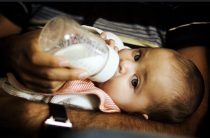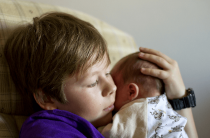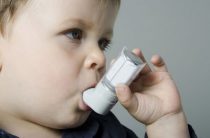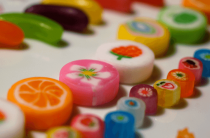At the present time, there are a lot of different diseases that can overtake young children. Among those in the 21st century, a very common ailment is called allergic dermatitis. Most often, the characteristic signs of dermatitis occur on the skin of an infant during the first six months of life. With regards to exacerbations, they can appear throughout the years until reaching adolescence. It is important to note that in some cases, signs of the disease are also found in the adult population.
If a child or an adult is concerned about any suspicious symptoms, you can make an appointment with a doctor at any time on the website meds.ru. There is no need to delay this in order to prevent the development of complications of the disease, not to worsen overall well-being. Remember, health comes first.
Allergic dermatitis is an inflammatory process that occurs on the skin. It is necessarily based on an allergic reaction. A rash on the skin can be of varying intensity, different shapes. But in any case, it is manifested by severe itching. Many parents believe that this disease is associated only with food. For example, a nursing mother ate some wrong product, the child himself could eat one or another “forbidden” product (if he can already eat on his own, he has outgrown the time of breastfeeding).
Such products that should be banned for allergy sufferers include strawberries, chocolate, citrus fruits, and many other foods that can provoke allergic dermatitis in children. Usually, after a few hours, the skin of the baby acquires a bright pink color, itches irritably. In fact, intolerance to certain products is not the main and frequent cause of the appearance and development of allergic dermatitis.
Causes of allergic dermatitis
Symptoms of the disease, such as rashes, peeling, skin irritation, can occur as a result of a “response” to inhaling something or touching something. Depending on the way the allergen enters the body of children, an allergic reaction will be called respiratory, contact or food.
- If dermatitis occurs against the background of the penetration of some allergen through the skin, then we are talking about contact allergies. (The provoking factor could be, for example, synthetic fabric).
- If children are diagnosed with respiratory allergies, then powder, any cleaning or detergent, plant pollen, household dust could become a risk factor. The child simply inhaled the allergen, which provoked the development of allergic dermatitis.
- If an allergy began to develop on the skin due to the use of one or another product that can provoke an ailment, then the food allergy disturbed the baby.
Please note that the disease allergic dermatitis has other names. You can often hear terms such as childhood eczema, atopic dermatitis.
Allergic dermatitis in children: the main signs
There are three phases of this disease.
The first covers the period from birth to two years, called infantile allergic dermatitis. The next phase lasts after 2 to 13 years, called the infant. The third is the teenage phase, which occurs in children after 13 years of age. The symptoms of each of these forms are different from each other. Among the general signs of the disease, itching, pain during touching, and rashes on the body are distinguished.
In infancy, allergic dermatitis is often localized on the trunk, face, folds of the legs, arms.
Rashes are weeping areas of the skin. In this case, the skin is dry, crusts appear on it. If we talk about the childhood form of the disease, it is characterized by swelling of the skin, redness, the appearance of spots, erosions, cracks, erosion, rashes on the neck, bends of the arms and legs. In the adolescent form, the rash appears on the elbows, in the décolleté, face, and neck. Most often, before the age of 18, signs of allergic dermatitis in children disappear. Sometimes it happens the other way around, the lesions increase very much, the disease begins to manifest itself in adulthood.
Complications, consequences of prolonged atopic dermatitis
It is important to remember that the most dangerous symptom of allergic dermatitis in children is severe itching. Its danger lies in the fact that constant combing of the skin leads to the appearance of wounds, cracks, where fungal microorganisms, all kinds of bacteria can easily penetrate, provoke the development of a secondary infection. A complication of scratching inflamed areas can be pyoderma, that is, a pustular infection, the treatment of which requires the use of antibiotic drugs. This contributes to the deterioration of the quality of the skin and the general well-being of children.
Toddlers sleep restlessly, it hurts when clothes touch their body, it hurts to swim, to move. Quite often, a child is overtaken by several infections at once: a cold, a purulent rash, a thrush of the oral cavity. Remember that you can avoid the development of complications of allergic dermatitis in children if you follow the whole range of preventive measures that we will talk about now.
Disease prevention for children
First of all, it is necessary to eliminate the influence of factors that contribute to overdrying of the skin.
That is, parents should maintain a cool temperature and a humid atmosphere in the child's room, do not wear a lot of clothes on him, often walk in the fresh air. The baby should always drink plenty of fluids, especially in the hot summer season. An important preventive measure is proper, balanced nutrition. Children should not overeat, so parents are required to monitor the amount of food eaten.
Excessive consumption of this or that food provokes the occurrence of negative reactions on the skin. A striking example of this are itching, hyperemia, drying, rash. The skin of children is under the influence of attack of toxic substances from the inside, and not from the outside. To avoid the development of such a disease as skin dermatitis in children, it is necessary to choose only high-quality clothes. Let's list the basic requirements for clothing. Firstly, it should not create a feeling of discomfort: do not press anywhere, do not rub, do not pinch anything.
- In order to prevent the occurrence of allergic dermatitis, clothing should be made from natural materials. For example, cotton, linen.
- Washing of things should be done with the addition of products designed specifically for washing children's clothes. Rinse plays a huge role. Rinsing should be carried out thoroughly so that not a single gram of chemicals remains on things.
- Many mothers try to create excessively clean living conditions, which sometimes increases the likelihood of developing allergic dermatitis in children several times.
Those children whose mothers do not strive for perfect cleanliness get sick much less often, are less susceptible to infection. If you wash yourself very often, wash yourself, especially with the use of soap, the fat layer on the skin will be destroyed, making them much more sensitive, more vulnerable to environmental factors. - Children need to bathe once a day, using hypoallergenic children's cosmetics. After the baby reaches 1 year old, you can bathe twice during the day.
Treatment of allergic dermatitis in children
If you have any suspicious signs of illness, you should contact your doctor as soon as possible. Only he has the right to prescribe treatment. In a situation with dermatitis, topical corticosteroid drugs (hormones that have an anti-inflammatory effect) often come to the rescue. These medicines are prohibited for treatment without the appointment of a specialist. For some young patients, doctors advise antihistamines, immunomodulators, and sorbents.
Supportive care
Often, auxiliary treatment of the disease consists in the use of various methods of moisturizing the skin. To carry out this procedure, the doctor prescribes to the patient fats and cosmetic substances containing them, which do not penetrate inside to living cells, and are retained only in the stratum corneum of the skin. These fats and products based on them are called emollients. The main task of emollients is to soften the skin, increase its level of moisture. No matter how strange it may sound, but by themselves such products do not have a moisturizing effect, but they carefully prevent the loss of moisture remaining in the skin.
To treat allergic dermatitis in children, the doctor may prescribe emollients in the form of bath products, for washing, for application to the skin. The specialist prescribes emollients depending on the degree of inflammation, on the level of dryness. Also a significant factor is the presence or absence of a secondary infection. The most commonly used treatment regimen is as follows: emollient is applied twice a day, one emollient must be applied after bathing in order to maintain maximum moisture in the skin.
How to reduce the risk when using corticosteroids?
In order to minimize the risk from the use of topical hormonal agents, several mandatory rules must be followed.
- They should be applied to the skin before using emollients, otherwise the fatty film will not allow the medicine to pass to the skin.
- Corticosteroids are selected exclusively by the doctor, depending on the severity of the disease in the baby.
- Only weakly active corticosteroids are applied to the neck and face.
- Corticosteroids are suitable for the treatment of new rashes that appeared no later than two days ago.
- Inflamed areas are recommended to be treated with hormonal agents no more than twice a day.
- Before treatment, be sure to consult with a pediatrician!
Foods that cause allergies
Consider a list of foods that contribute to the development of an allergic reaction.
Highly allergenic are: honey;
- mushrooms;
- eggs;
- chocolate;
- whole milk;
- seafood;
- tomatoes;
- bananas, strawberries;
- wheat, rye.
The average degree of allergenicity is inherent in such products as:
- potato;
- buckwheat, rice, oats;
- peaches, apricots;
- meat of chicken, other birds;
- beef;
- rose hip;
- beans;
- cherry, black currant.
Low allergenic products include:
- millet, corn;
- cucumbers;
- parsley, dill;
- dairy products;
- turkey, rabbit meat;
- lean pork;
- cabbage;
- white currant;
- yellow plums;
- green apples and pears.
Allergic dermatitis can be cured if you follow all the recommendations of your doctor. At the first signs, go to the hospital in order to start treatment faster, reduce the risk of developing complications that have an extremely negative effect on children. Take care of your kids, keep hygiene, walk in the fresh air more often, avoid overheating and hypothermia of the little one!















